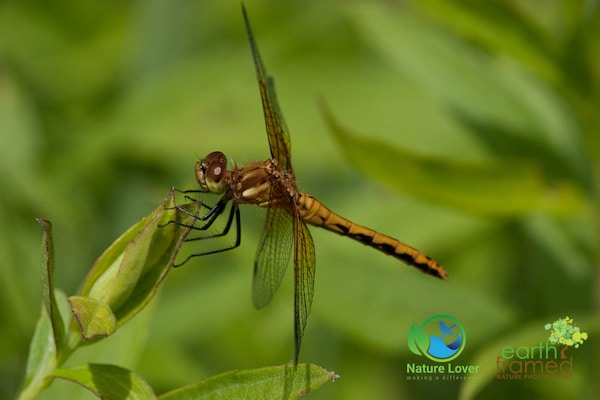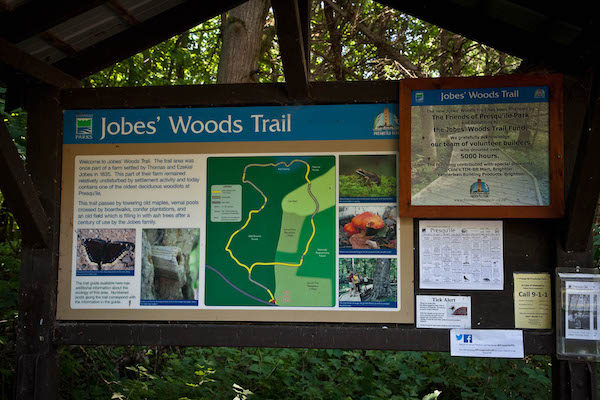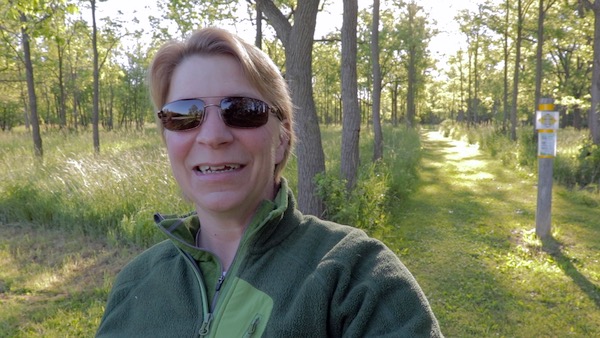The Tower Trail at MacGregor Point Provincial Park is one of our favourites to hike while camping at the park. The trail takes visitors around a Ducks Unlimited wetland project and features a viewing tower and a bird hide. The trail is 3.5 kilometres long and is flat and easy for strollers. Bikers are asked to walk their bikes across the boardwalks.
There are three access points to the trail, one in the park and the other two are along Richardson Line, just south of the park. The park access point has a parking lot, while visitors will have to carefully park along the side of Richardson Line.
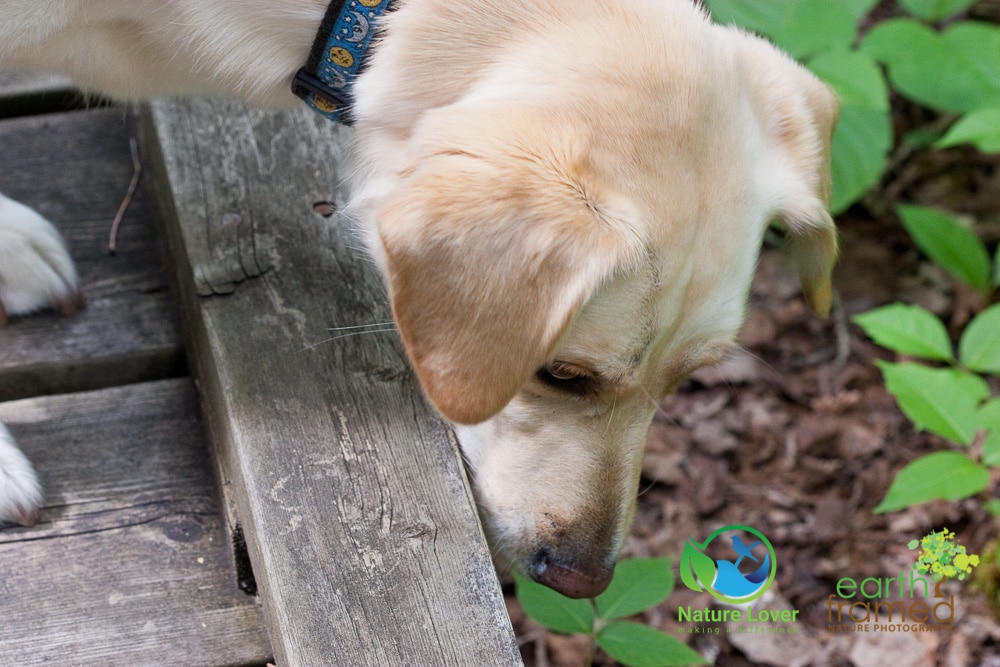
From the park trail head the path starts along a raised boardwalk to allow access during the spring. Maya always enjoyed smelling for critters and even certain plants while we walked the boardwalks.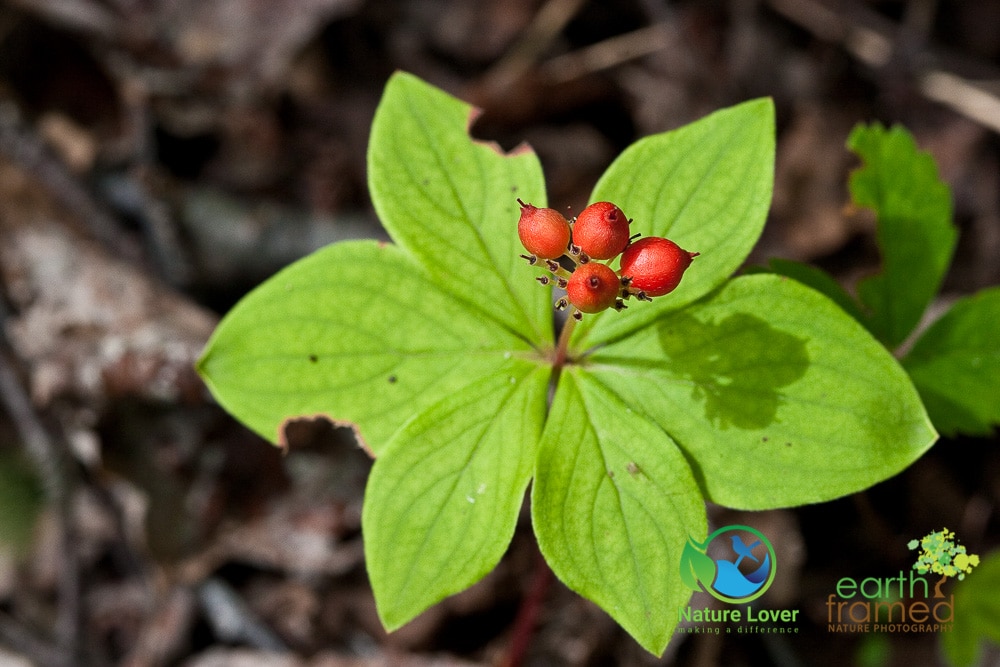
Back in 2007, when these pictures were taken, I was just beginning to get interested in photographing wildflowers and didn’t have a clue what most of them were. Now I know that the above is a native Bunchberry plant that has already lost its flowers and gone to seed. The fruits may look like berries but they are actually stone fruit. 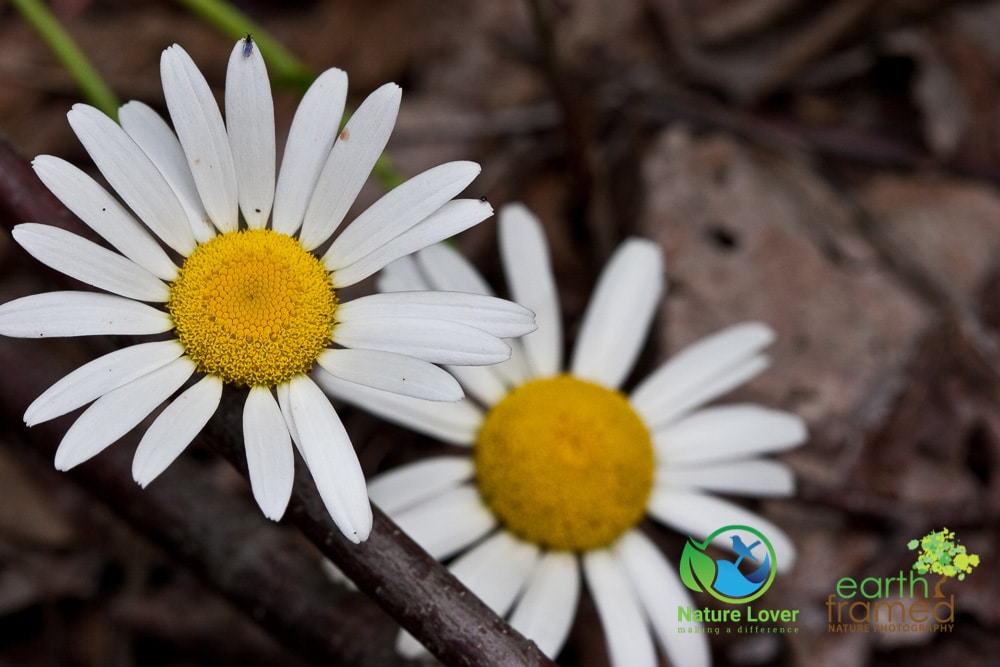
Ox-eye Daisies are pretty easy to identify but they can range in height from 1 to 3 feet. These long lasting non-native species can be found in late spring and as late as early fall. 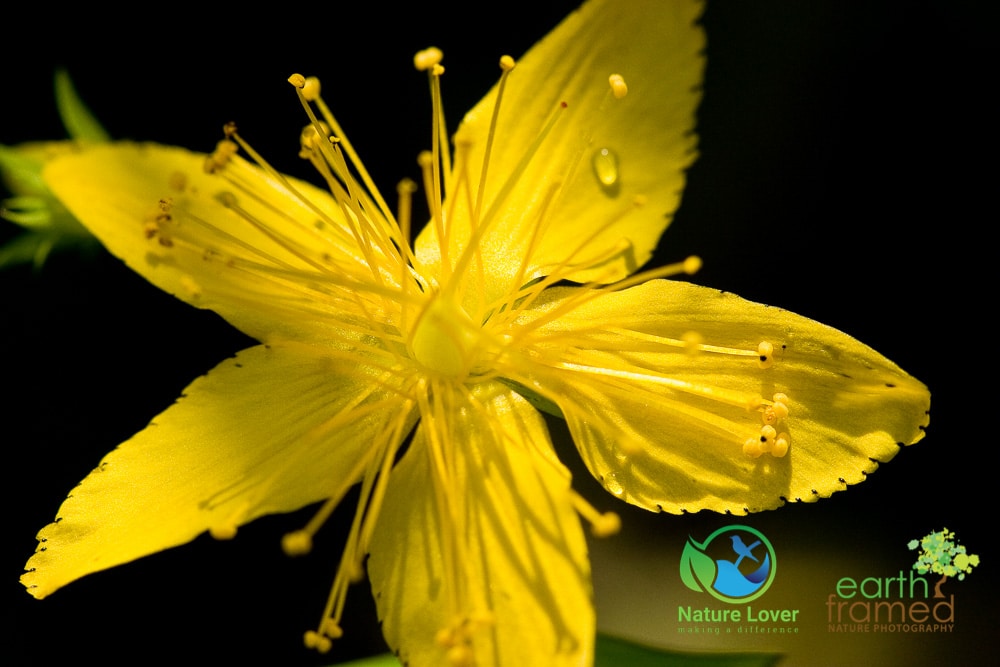
Common St. John’s Wort is another non-native species that is found throughout most of Canada, primarily in eastern Canada and British Columbia. This showy yellow flower blooms from July to August and it attracts both bees and butterflies. 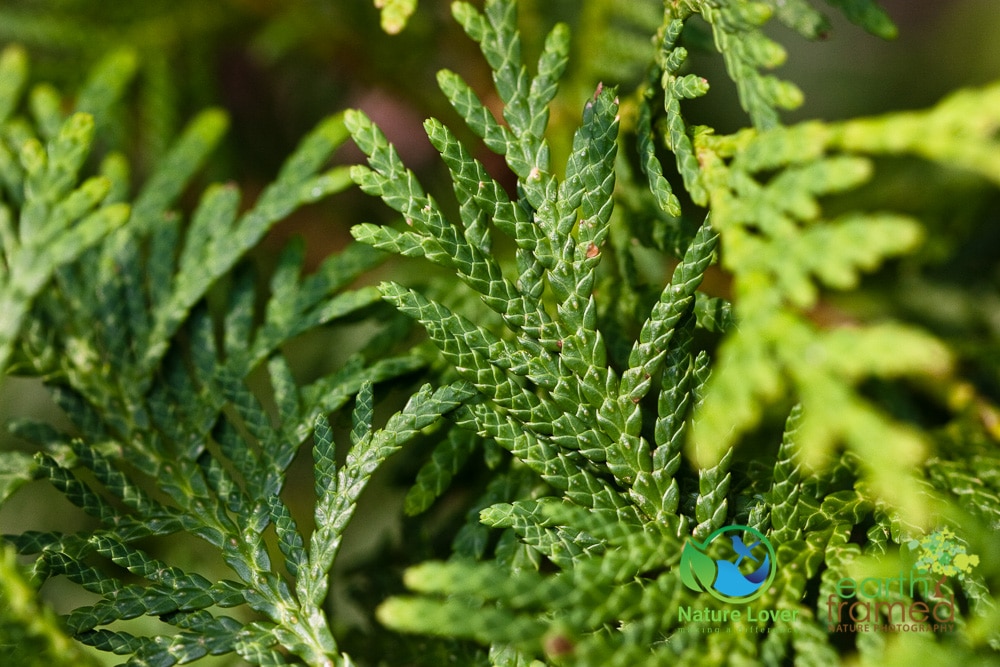
I love the vibrant colour and the amazing textures of cedar foliage. Maya also enjoys smelling both cedar trees and junipers, as most dogs do.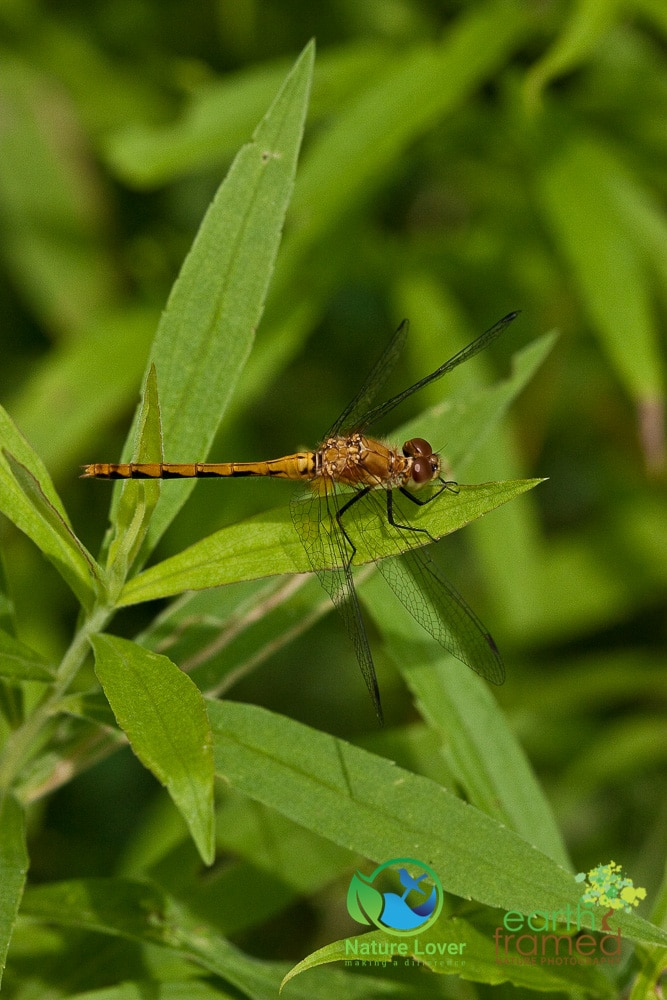
This female White-faced Meadowhawk was warming up in the early morning sun. The males are red and black in colour.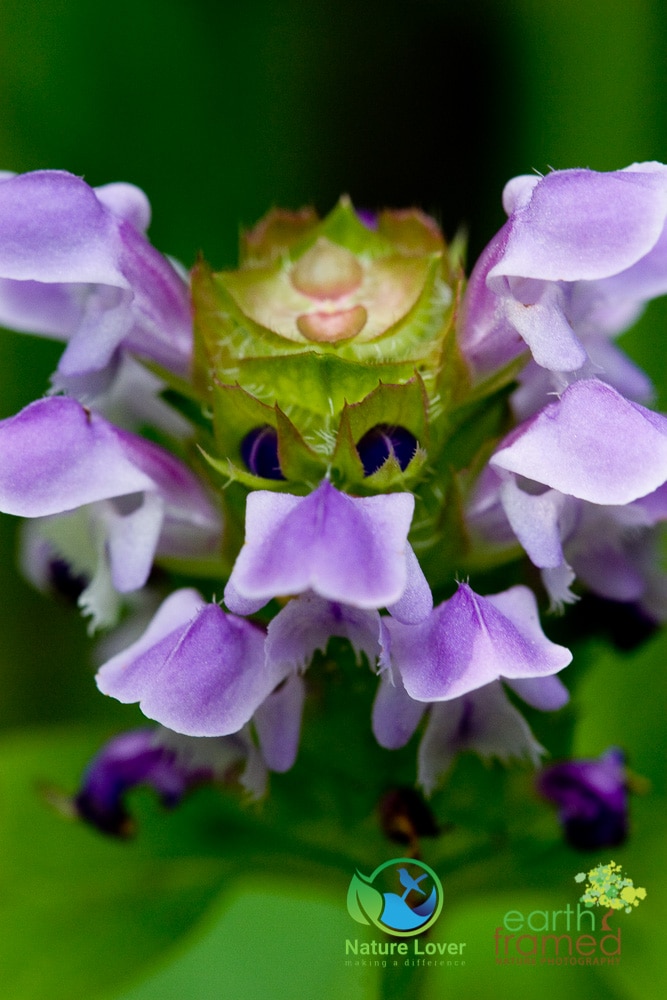
Heal-all is an amazing plant, which is why it’s name it what it it. This edible plant has many names, like Self-heal and Heart-of-the-earth. The young leaves and stems can be eaten raw in salads, or the whole thing can be boiled and eaten. The plant contains vitamins A, C and K and is found in Europe, Asia and North America.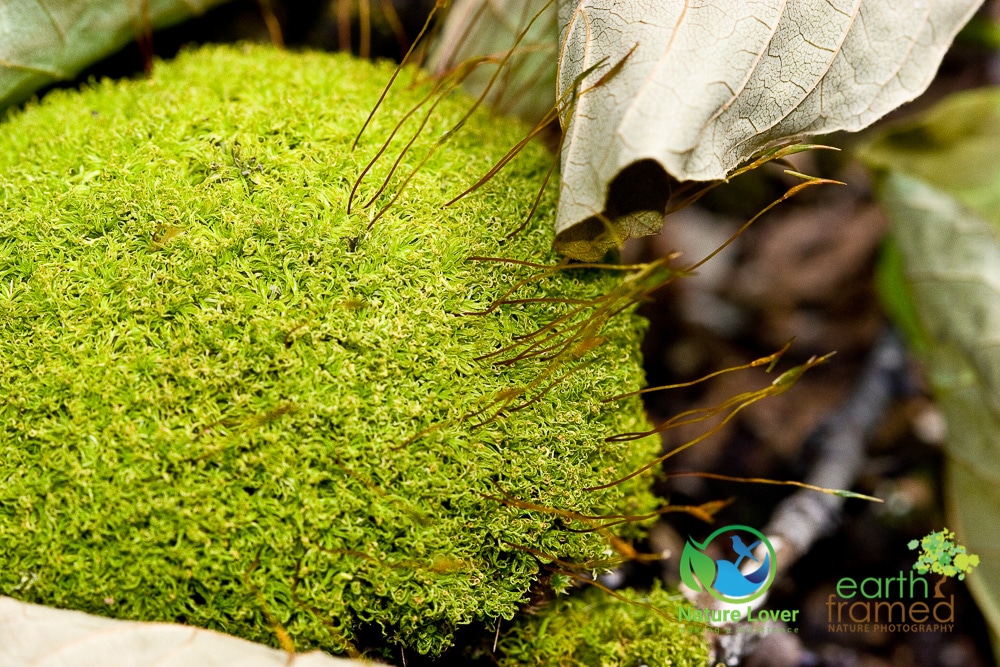
I really don’t know too many species of mosses but I do find them beautiful and fascinating. The photo above shows the fruiting bodies the grow up out of the moss with a stem that ended in a capsule. Unlike most plants, mosses do not flower, they do not have seeds and they do not have vascular bodies.
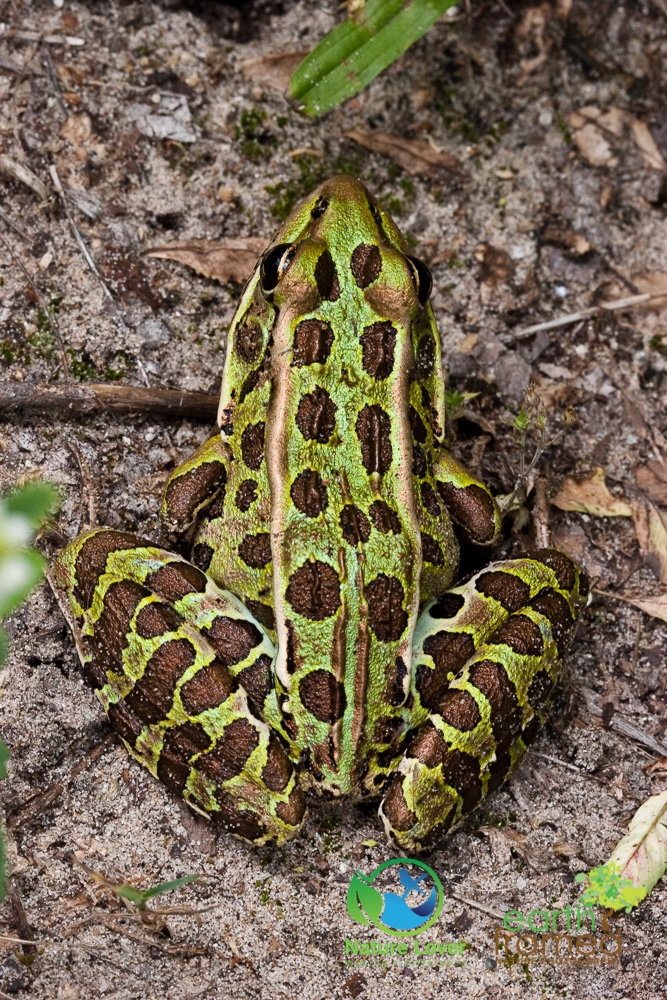
This gorgeous Northern Leopard frog let me sneak in for a close-up before hopping away. Unlike Green Frogs, these frogs do not need to be in the water as much and can be quite happy on land is there is a heavy dew to keep them moist. They eat crickets, flies, worms and smaller frogs. I have witnessed one trying to eat a Banded Woolly Bear caterpillar, unsuccessfully. 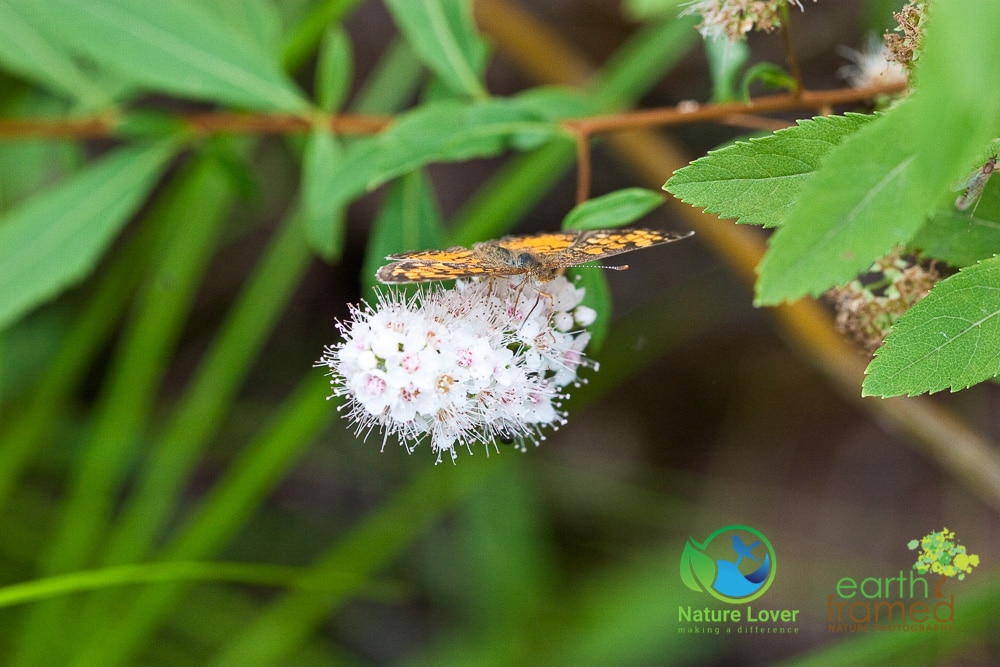
The Tower Trail is a great place to spot a variety of butterfly. The best areas are around the wetlands when they are less active. It’s hard to tell what kind of butterfly this is because we can clearly see its markings but it is probably either a type of Checkerspot or a Crescent. 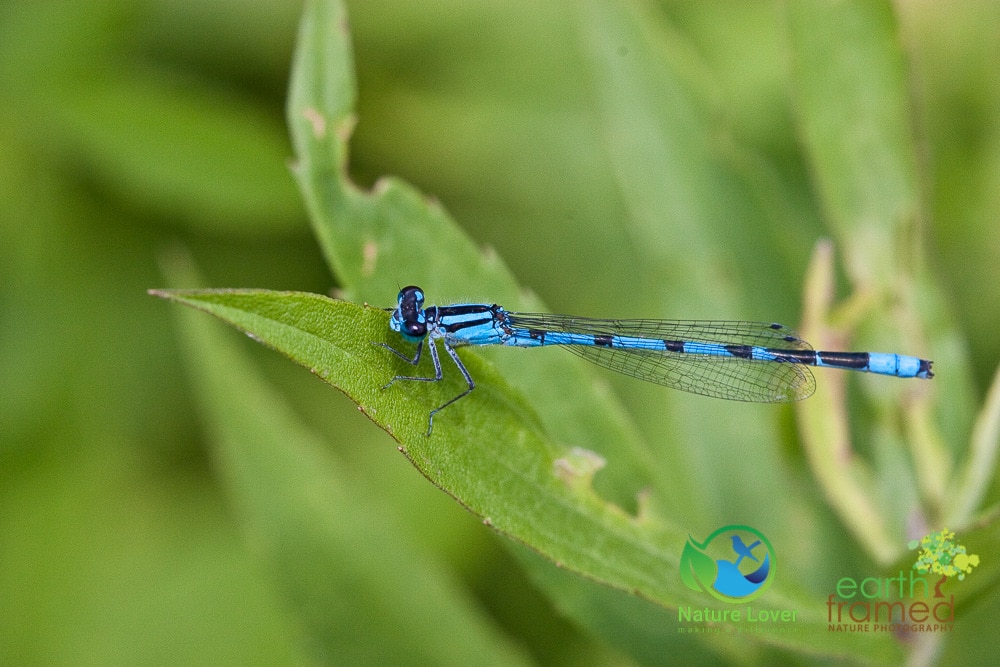
I’m not going to pretend to know which Bluet Damselfly this is but isn’t he extraordinary? Look at those colours! 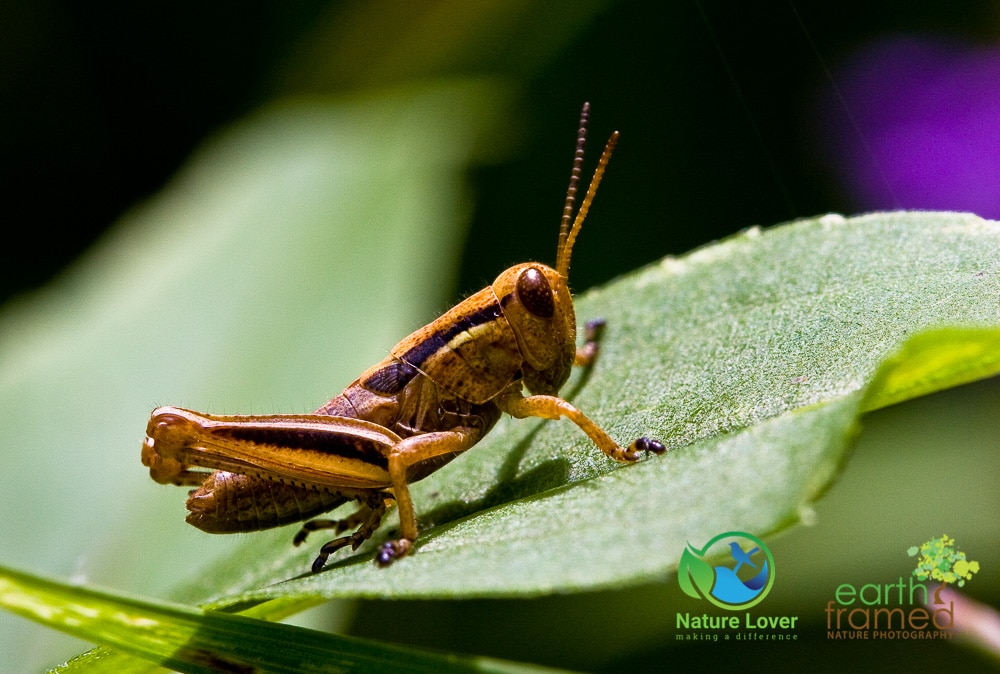
This Short-horned grasshopper was also soaking up the rays, which is one of the reasons he probably didn’t jump away as soon as I got close. Again, I really know very little about the different species and families of grasshoppers, so if you know exactly what it is, please comment below.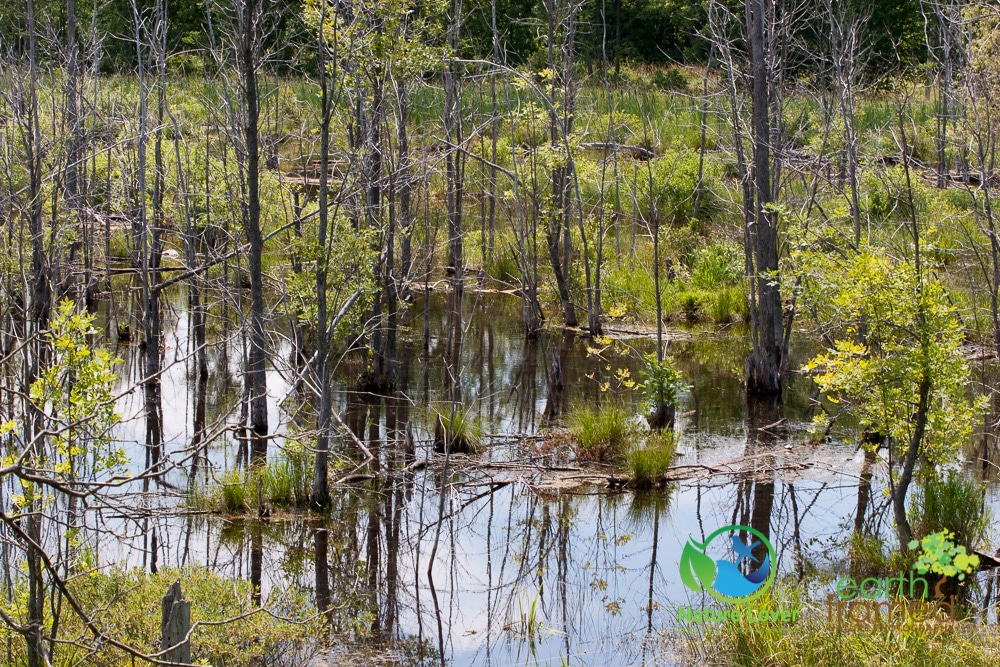
This is a view from the one platform but I only had my macro on so it’s hard to get a good feel for the whole wetland. The trail has a lot to offer visitors, from an easy hike through woods and around a wetland, to nature enthusiasts looking for birds, butterflies, dragonflies and other wildlife.
Sources:
Fisher, Robert (1932). The English Names of Our Commonest Wild Flowers … T. Buncle & Company.
Khare, C.P. (2007). Indian Medicinal Plants: An Illustrated Dictionary. Springer.
Ligrone, R.; Duckett, J.G.; Renzaglia, K.S. (2000). “Conducting tissues and phyletic relationships of bryophytes”. Philos Trans R Soc Lond B Biol Sci.


